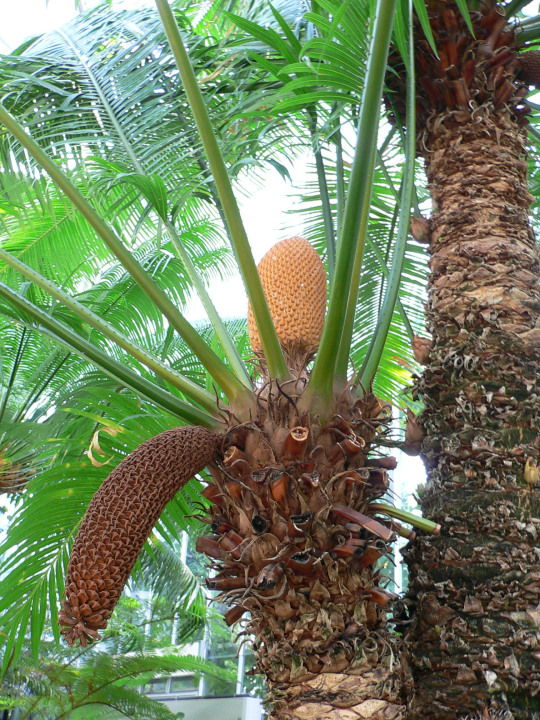I post about plants, especially rare plants and ancient lineages, but also anything that interests me in my botany journey!
Don't wanna be here? Send us removal request.
Text
This is such an unusual color. South Africa is one of my dream botanical destinations. The botanical diversity and uniqueness is amazing.

Lachenalia viridiflora
Lachenalia is a genus of bulbs, mostly native to the winter-rainfall area in South Africa and southwestern Namibia. They were formerly placed in the Hyacinth Family, but this has changed with a new arrangement of monocot plant families. Now, the plants formerly put in the Hyacintaceae are included in the subfamily Scilloideae within the Asparagus Family. Happily, Lachenalia viridiflora just keeps on putting out its incredible turquoise flowers in early winter, no matter what family people opt to park it in! From the southwestern part of South Africa, near to Cape Town.
-Brian
52 notes
·
View notes
Text


Banksia proteoides
This is one of the many Australian species in the Protea Family that were formerly placed in Dryandra, before that genus was subsumed into Banksia. So what was formerly Dryandra proteoides has become Banksia proteoides. The name "proteoides" refers to the cluster of flowers cupped by bracts (looking like brownish overlapping fish scales in the photo), reminiscent of the flower heads in Protea. The leaves are long and narrow, with serrated edges, dark green on the upper side and silvery beneath. The flower heads tend to come on woody older stems, so they are often lost among the foliage, hiding down at the base of the plant. But I waited until the sun angle illuminated the base of the plant to take the photos. This species grows a little inland from the west coast of South Australia.
-Brian
20 notes
·
View notes
Text


Aloe lukeana
Though not yet well known in horticulture, Aloe lukeana is a very attractive fall-flowering species from Uganda, with a branching inflorescence and a flower color that ranges from red to various shades of orange. It has done well for us here at the Ruth Bancroft Garden, though we have planted it in a bed that gets a protective winter cover because of its tropical origins.
-Brian
56 notes
·
View notes
Text
Ericas
https://botanicalsociety.org.za/diversity-unparalleled-an-introduction-to-ericas/
Apparently these are now common garden plants in some regions.
0 notes
Text

Well, since the name of the blog is Cycadelic (can you believe that name was available? Because I can't. What have you been doing, plant people?), I feel it only appropriate to kick things off with a post on cycads.
That wild-looking palm-like thing in the picture above is a cycad. They're not palms. They're more closely related to pines and other conifers, and are grouped within the gymnosperms. (Palms, incidentally, are technically speaking grasses, albeit very weird grasses.)
Cycads are long-lived and start life looking more like a fern with a big, if short, trunk. Over time, they get taller and assume a more tree-like appearance. They reproduce via cones. They're a very old plant lineage; of the seven known cycad families, five are extinct.
I made one attempt at having a potted cycad, and I managed to kill it unfortunately because I really didn't understand what I was doing. That's not to say they don't make good houseplants. Given the right conditions, they can thrive. They need a good amount of light and humidity, which was just unfortunately not something I could offer my cycad at the time with my then-living-arragement. The oldest potted plant on record is a cycad living at Kew in the UK; it was brought back from South Africa by Francis Masson in 1775 and has been thriving ever since, although it's now rather elderly and has to be propped up as some cycads tend to droop over as they get bigger and heavier. Interestingly, it produced cones only once, in 1815. And hey, I can appreciate that. Producing cones takes a lot of energy and its not like it needs to make new cycads in its current home. A 209-year vacation sounds pretty good to me.
Cycads live all over the world, but they're sadly in decline, with around a dozen species severely threatened. As they're a very old sort of plant, having existed concurrent with dinosaurs, this isn't super surprising, and it's pretty cool we still have any around at all.
If you're planning on buying a cycad as a houseplant, do your research first and be sure it's an ethically grown specimen that isn't wild-harvested. This should be the case with all potted plants, but especially those that have fragile populations and often live in equally fragile ecosystems.
0 notes
Text
was anyone going to tell me that Acetabularia is like. genuinely a single celled organism that only has one (1) fucking nucleus for the whole thing or was i just supposed to learn that on wikipedia while looking for free-to-use photos of cool greens for a presentation. qhat the fuck
109 notes
·
View notes